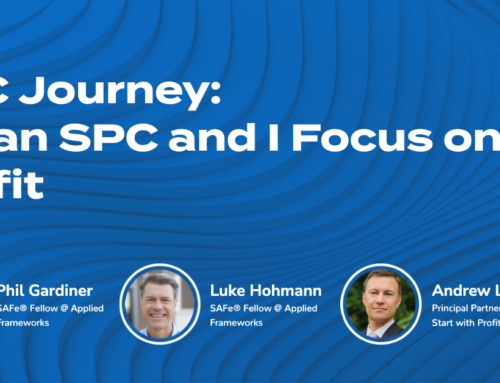According to a Gallop poll, 70% of white collar workers are still working remotely, and survey after survey shows that they want to keep the flexibility of remote work. However, many employers have the expectation employees will begin returning to the office by early September. For folks that have no choice in the matter, participation in office life can bring back a host of irritating rituals that have largely been absent in the last year. First among them is the return of the yawn-inducing, soul-crushing, boring meeting.
I get it — poorly designed meetings can be a waste of time and are epically dull. In order to prevent people from wasting a single moment of their valuable time, we’re sharing four simple steps from our CSP ScrumMaster program to help learners combat boring meetings, either online or in-person.
- Use a meeting framework: Most boring meetings rely on open discussion, an unstructured dialogue where people can speak for as long as they like. Because open discussion is the default setting for any meeting, unless updated by the meeting organizer, most people find these types of meetings both boring and frustrating because there are no rules governing turn-taking, topic adherence, how much time one person can speak or any other constraint. The dangers associated with open discussion are well-known, which is why we recommend using a framework instead of open discussion. In our experience, the simple act of disrupting this default meeting setting will transform a boring meeting into something collaborative and engaging. Three frameworks for doing so (from an article we wrote at the beginning of the pandemic) are provided here:
• Who-What-When
• Motivation-Ease Reminder
• SMART Goals
If you need more ideas for frameworks to use, we offer a variety of additional frameworks on the Applied Framework’s Resource Page. Even more, a recent article of mine points to five other sites, with hundreds of other frameworks. - Make sure your meeting purpose is clear: A boring meeting usually begins because the person organizing the meeting has no clue on what they want to accomplish during the discussion. The meeting purpose describes why the meeting exists and summarizes the positive goal, or outcome, you hope to achieve by hosting a meeting. We recommend writing a meeting purpose in a way that helps people say, “Yes, I want to attend!” or, “No, that meeting is not a good use of my time.”
- Keep the participant list as short as possible: If you are looking to schedule a boring meeting that wastes the maximum amount of time, then the next step is to invite everyone you could possibly think of to attend. Don’t do that. Our recommendation is to limit the number of participants to about eight to encourage collaboration and engagement. Larger meetings are OK, as long as each person is going to participate in helping the group achieve the meeting purpose.
- Share the agenda in advance: The last way to guarantee a boring meeting is to send out a meeting invite with no agenda. A meeting with no agenda is like walking into a dark room – once the door is shut you have no idea if you are in a closet, a dining room or gymnasium! An agenda provides the meeting structure and helps the participants understand 1) how the meeting purpose will be achieved within the proposed timebox; 2) their role in the meeting; and, 3) the point in the meeting where their participation is expected. Our recommendation is to structure the agenda as a series of questions that progressively lead the participants closer and closer to the meeting goal or objective.


 Additional Reading on How to Combat the Boring Meeting
Additional Reading on How to Combat the Boring Meeting



